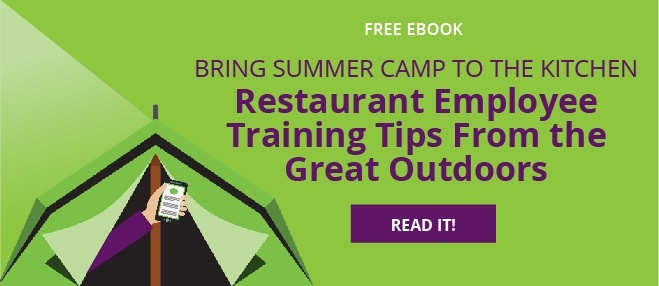Operational Learning is a new concept gaining attention in the learning and development (L&D) space. Where regular L&D concerns itself primarily with staff development, operational learning is a more holistic strategy for the organization.
Combining daily operations with employee training educates line workers and floor staff as well as corporate departments and management, too. When you decide that you want to take the next step into operational learning, keep these 4 tips in mind:
Secure buy-in from upper management and local management
Your learning program touches all parts of the workforce - management, executives, line cooks, wait staff, finance, even IT. Any new initiative that doesn’t have the full support of the management team is doomed to an expensive failure. Your executive team will need to be visibly on board while promoting the initiative. This enthusiasm will transfer to the regional, district, and local management teams, who will then inspire the staff of each location.
Use an eLearning system for gathering data
One of the benefits of operational learning is having visibility into the effectiveness of training. Paper-based systems are not efficient for gathering and displaying learning progress, so a computer-based learning environment is necessary to fully deliver on the promise of operational learning.
Open feedback loop for messaging upstream
Learning does not happen in a vacuum, and the most effective learning happens when the learner is engaged in a dialogue with not only their teacher but with their peers as well. While in-person discussions are preferred, the hectic nature of a restaurant floor isn’t always the best place to give feedback about lessons or the training program in general. A messaging module within the eLearning system lets employees send comments or criticisms on their own time. A cornerstone of this type of learning is a receptive environment that treats feedback as an important part of company growth.
Mobile - it’s what the staff will be using
Much of your staff is made up of the three generations known as Generation X, Millennials, and now the Post-Millennials. These workers have always had technology in their lives and are comfortable with using tech in the workplace, especially smartphones and tablets. Your eLearning system should be mobile-ready (also called “responsive” because it responds well on both mobile and desktop hardware) and make use of all of the benefits of mobile devices - audio, video, and text are all legitimate methods of communication.
Keep all of these tips in mind when considering a change in your learning approach in your restaurants. It’s not a move you can do in a day or a few weeks. As previously mentioned, it will take an organization-wide commitment, but the benefits gained in employee engagement and skill acquisition will be a significant return on your investment. Download our ebook, Bring Summer Camp to the Kitchen: Restaurant Employee Training Tips from the Great Outdoors, for some more great restaurant employee training tips.






